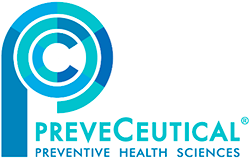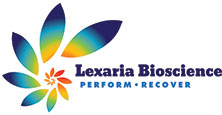- Developing Nature Identical™ peptides derived from Caribbean Blue Scorpion venom to treat, regulate and prevent cancer progression
- Global market for cancer treatments projected to reach $161.3 billion by 2021
- Unique Sol-gel nose-to-brain CBD delivery platform under development to provide clinical relief of various physical disorders
- Global neuropathic pain market estimated at $8.3 billion by 2024
- Proof of concept already demonstrated for dual-gene therapy for type 2 diabetes and obesity
- Global expenditure for diabetes market in 2016 reached $825 billion
PreveCeutical Medical Inc. (CSE: PREV) (OTCQB: PRVCF) (FSE:18H), headquartered in Vancouver, British Columbia, Canada, is a health sciences company dedicated to researching and developing innovative options for preventive and curative therapies utilizing organic and Nature Identical™ products. The company is strategically staking out select positions in the medically acute areas of diabetes and obesity, pain management, neurological disorders and cancer.
PreveCeutical Medical Inc. had its beginnings in 2009 when Stephen Van Deventer, a seasoned businessman and venture capitalist, and Kimberly Van Deventer, a successful entrepreneur, met and formed a business partnership. The duo created Cornerstone Global Partners, a venture capital and business development company, and became involved in numerous ventures including building companies such as Aurora Cannabis Inc. Taking their interest in the health and wellness market further, the pair began researching how nature and science can work together to benefit health-conscious consumers. Coining and trademarking the word “PreveCeutical” – a combination of the words “preventive” and “pharmaceutical” – was a precursor to the company’s formation and incorporation in October 2015.
The company’s first product was developed in the Dominican Republic and is now marketed and distributed worldwide by PreveCeutical. It is a Caribbean Blue Scorpion venom product sold under the trade name CELLB9®. This product is an oral dilute solution infused with select peptides sourced exclusively from the blue scorpion (Rhopalurus princeps) found only in Caribbean nations. The active potentiated ingredients in CELLB9, which have been used in over 40 countries for over a decade, appear to support health at a deep, cellular level. PreveCeutical’s research team is using proprietary chemistry to generate Nature Identical™ peptides derived from natural compounds found in Caribbean Blue Scorpion venom with the goal of eventually treating, regulating and preventing cancer progression. Peptides are also being used to target an array of disease indications including metabolic disorders, pain management, cancers, cardiovascular and infectious diseases.
PreveCeutical is developing the first nose-to-brain delivery system of cannabinoids (CBDs) with a novel process that prepares insoluble drug-containing nano-micelles and successfully incorporating them into a proprietary sol-gels application, essentially creating a targeted drug delivery vehicle. Intended for use via a nasal spray, this unique formulation rapidly gels upon contact with mucosal tissue, which paves the way for direct nose-to-brain delivery. This novel application eliminates first pass metabolism (stomach, intestines, liver), potentially improving bioavailability and delivering extended time release formulations that may alleviate side effects of higher dosage therapeutics. This CBD-based patented formula is projected to be deployed in selected markets with licensed medical marijuana companies within 18 months.
PreveCeutical is working with four leading Australian research centers to develop a curative therapy for diabetes and obesity. This four-year program involves engineering a novel approach that selectively targets the gene that encodes for the protein PTP-1B, which is implicated and over-expressed in both type-2 diabetes and obesity. PreveCeutical’s gene-silencing technology would effectively “turn off” the genetic signal which leads to the over-production of this key protein molecule, bringing it back down to safe, normalized levels, and prevent the body from storing excessive fat. Diabetes kills one person every six seconds, with more than $800 billion spent globally on the disease.
Another exciting joint venture, established with Sports 1 Marketing, will focus on the therapeutic potential in the peptides and proteins connected to the Caribbean Blue Scorpion venom to potentially treat mild brain injury concussions. Developing a therapeutic product geared towards athletes who suffer from concussions could help alleviate suffering experienced by those who are affected by head trauma.
PreveCeutical Medical’s science and research team is led by Dr. Harendra (Harry) Parekh, Ph.D., who is based at the University of Queensland’s (UQ) Pharmacy Australia Centre of Excellence (PACE), and Dr. Makarand Jawadekar, Ph.D., whose 28 years of R&D experience with Pfizer Inc., is applicable in his role as chief science officer. Research collaborators include Dr. Rakesh Veedu, an emerging expert internationally in the field of molecular medicine, and Professor Grant Ramm, who is currently head of a leading medical research institute located in Brisbane, Australia.
PreveCeutical Medical is partnering with leading industry experts and companies in its quest to be a leader in the preventive health sciences sector. Its Research and Development partnership with UniQuest, the main commercialization company for the University of Queensland, provides PreveCeutical with the rights to all intellectual property arising from projects created under the agreement. PreveCeutical Medical Inc.’s management team brings an extensive portfolio of research experience, product development, deep corporate strategy and capital markets leadership to the company’s core.
For more information, visit the company’s website at www.PreveCeutical.com
Let us hear your thoughts: PreveCeutical Medical Inc. Message Board








